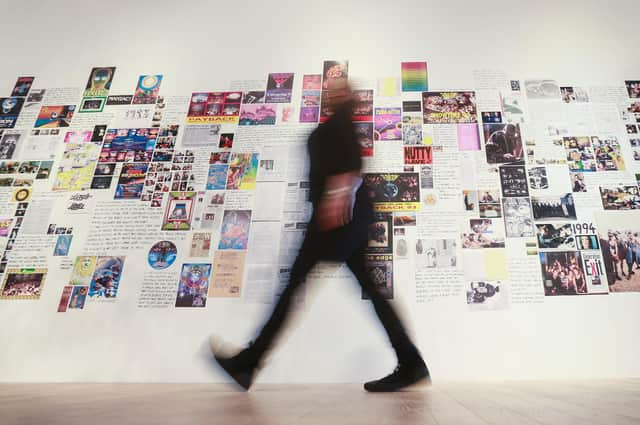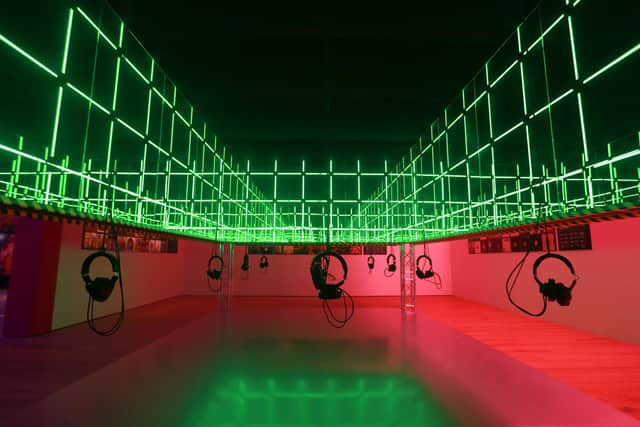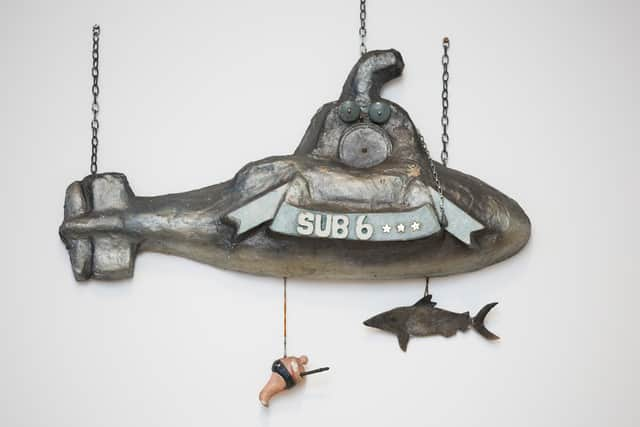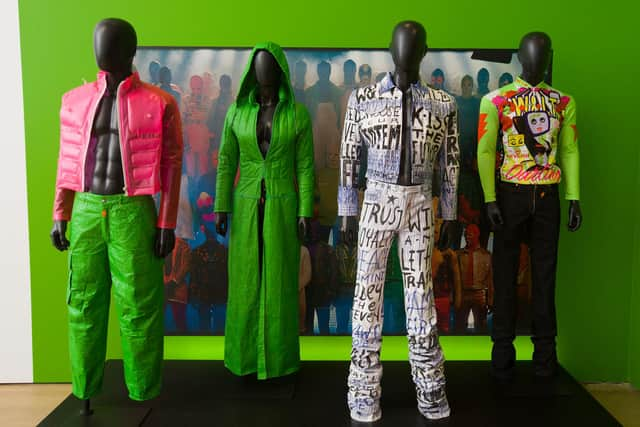Art & Design review: Night Fever: Designing Club Culture, V&A Dundee


Night Fever: Designing Club Culture, V&A Dundee ****
It has been said that a psychiatrist is a man who goes to Les Folies Bergère and looks at the audience. Something similar might be said of a person who goes to a nightclub to look at the architecture, which could help explain why there has never been (until now) a large-scale exhibition about nightclub design.
This conundrum might also explain why this show, created by Vitra Design Museum in Germany, and at the V&A Dundee for its only UK dates, doesn’t sit entirely comfortably. There is something about the nightclub experience which is intense and hedonistic – what media theorist Marshall McLuhan called “allatonce-ness” – which is entirely opposed to the thoughtful, reflective, investigative approach of the museum. Clubbing memories (like clubbing photographs) are hazy, to do with movement and sensation. If you can remember the colour scheme and shape of chairs you probably weren’t having much fun.
Advertisement
Hide Ad

The show makes the valid point, however, that clubs bring together a broad range of design elements found almost nowhere else: interiors and furniture, graphics and art, light and sound, fashion and performance. And, while some clubs exist wherever they can find a big enough space to rig up a sound system and a dance floor, others were icons of design, luxurious pleasure palaces or experimental multi-art-form venues.
The starting point is in the 1960s, with the invention of youth culture, though “pre-disco” clubs offered an eclectic range of music including rock, funk, soul, afrobeat and jazz, and the trendiest combined dancing with fashion, jazz, art and performance. The design mecca for early nightclubs seems to have been Italy, with clubs such as Bang Bang in Milan, in the basement of a futuristic boutique where the clothes were displayed in plastic capsules, and Flash Back, near the Piedmont town of Cuneo, built in the shape of a pyramid, a dome and a truncated ionic column, which opened into a complex of subterranean staircases, columns and lit-up dance floors.
One thing which becomes clear very quickly is that the history of nightclubs is full of visionary ideas which never got beyond the drawing board (such as Muppet creator Jim Henson’s idea for a club called Cyclia inside a geodesic dome) or which burned brightly for a very short time. Yellow Submarine in Munich, surrounded by a saltwater pool with its own sharks, was a club at the centre of a development of apartments, leisure and retail, Schwabylon, razed to the ground after less than a decade.
Iconic clubs exist now as legends: Le Drug which opened in 1964, part of a drug superstore in Montreal, or Cerebrum in New York, which lasted just a year, a multi-sensory experience in which guests would exchange their clothes for a white robe and sit playing bongo drums amid sound and light projections.


By the mid 1970s, however, disco was popular and commercial, exemplified by John Travolta in Saturday Night Fever, who makes an appearance on the big screen in the show’s central room. Clubs could be exclusive, like New York’s Studio 54, a place to see and be seen, as the photographs of glamorous gatherings attest. Area, which ran for four years in New York in the mid 1980s, was perhaps the ultimate in design, having its 1,200 square metre space transformed every six weeks by an in-house team of designers, artists and performers.
A club’s clientele could also form a profound relationship with a favourite venue. Manchester’s Hacienda, perhaps the UK’s most famous nightclub, was closed suddenly in 1997 and earmarked for demolition soon after. When the owners auctioned off parts of the building for charity, the affection with which former patrons snapped up individual bricks and sections of dance floor demonstrated beyond all doubt the role the club had come to play in their lives.
Advertisement
Hide AdBy the 1980s, the club scene changed as disco gave way to house and techno music coming from Chicago and Detroit. Rave culture is almost skipped over in the main exhibition, perhaps unsurprisingly as the party scene was moving out of designed spaces altogether into abandoned warehouses, barns and fields. However, there is a chance to catch up on this in the final room with Vinca Peterson’s ten-year photodiary, A Life of Subversive Joy, and Jeremy Deller’s superb film Everybody In The Place.
The show picks up the story again with techno, focussing on Berlin after the wall came down and iconic clubs such as Tresor, opened 1991 in the vault of a former department store, and Berghain, in a former power plant, still running and still mysterious, thanks to its strict door policy and complete ban on photography and filming.
Advertisement
Hide Ad

There is a great deal of information here, and the curators have clearly put much thought into how to prevent a show about places for having fun turning into a ponderous academic discourse. Images and film excerpts are accompanied by a selection of carefully chosen objects – light projectors, synthesisers, a disco ball (of course), a bollard from Hacienda. The examples of graphic design are outstanding and, while clubbing is a hard subject to photograph, there are evocative images by Vincent Rosenblatt (in Brazil) and South African photographer Musa N Nxamalo.
Art is also woven in, including Mark Leckey’s film Fiorucci Made Me Hardcore, compiled from found footage of the underground club scene in the UK, and Philip Topolovac’s scale model of Berghain. Tim Knights does something similar to Leckey with camcorder footage from Scottish clubs. There’s even a silent disco zone where viewers can don headphones and listen to playlists from a variety of eras. A final room celebrates the Scottish clubbing experience with clothing and memorabilia, photographs and film.
Of course, there is no getting past the irony of all this: that the nightclub sector is changing again, with some clubs struggling to survive even before covid-19. The design of the last decade is represented by temporary structures such as the Mothership, the mobile DJ booth created by Detroit designers Akoaki, and the beautiful multi-floor structure designed by Assemble for the techno music festival in Horst, Belgium, inspired by Elizabethan theatre.
For many viewers, this show will come wrapped in a kind of nostalgia, not only because their time on the dancefloor might be behind them, but because, in the post-pandemic era, the future of the nightclub might look very different for everyone.
Night Fever runs until 9 January 2022, www.vam.ac.uk/dundee
A message from the Editor:
Thank you for reading this article. We're more reliant on your support than ever as the shift in consumer habits brought about by coronavirus impacts our advertisers.
If you haven't already, please consider supporting our trusted, fact-checked journalism by taking out a digital subscription at https://www.scotsman.com/subscriptions